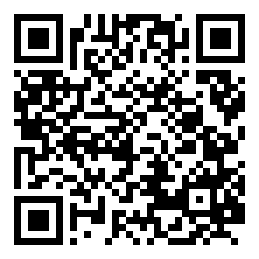And Where are the Opportunities?
Somebody has a problem and somebody has the answer to that problem, but... ¿How can we do to meet this couple?
Selección del Editor
- Comments:
- 0
- Votes:
- 3
- ES
To detect an opportunity we must be able to identify a problem and identify those who have this problem and are willing to pay for the solution (or identify who can afford the cost of the solution to solve the problem of who has it).
Opportunity versus reinventing the wheel
When we talk about identifying opportunities we arenʼt talking about reinventing the wheel. Even we arenʼt talked about reinventing the wheel when we talked about innovation, but that is another issue. Letʼs talk about opportunities. The opportunity does not imply the use of a unique and unlikely situation in which nobody has thought, in which plan extraordinary revenues and earnings of life long.
No, an opportunity is a situation, a space, in which we identified a problem of someone willing to pay for a solution that we can and we want to provide.
Opportunity and will
If we donʼt want to do it, regardless of the projected results, there is no chance. It is possible that we pretend that other resolves it from our brilliant idea. And for this you must purchase it and pay for it. Unlikely. Iʼm not saying impossible, but unlikely. Very unlikely.
If we want to do it, but we canʼt do it, we will have to get resources that it can do it. A partner or an employee (a topic for another article). If we want to do it and we can do it (through our capabilities, capabilities of a partner, or which they acquired through an employee), we must pay attention to the one who has the problem, to identify if that one have will to pay for the solution that we want to and we can now offer.
It is not chance
If the client that we identify with the problem does not recognize the problem, or recognizes it but arenʼt willing to pay for the solution that we offer, then it is not a chance. At least it is not for us. It is possible to make it to another, that can find a way to generate a revenue stream through payments of your customer, or someone that do it for your customer.
Examples of identification of a problem

Opportunity and desire
An opportunity is not necessarily something I want to do, I wish to do, or that I like to do. But if I identify an opportunity and it is also something I want to do, I would like to make or I like to do, a lot better. I mean that, unless one becomes the only option available in the world -which is unlikely-, it is difficult to find customers with the problems to be solved, in that I want to solve, at the price we want to do it. Is even less likely that those clients solicit projects we are waiting.
Opportunity and attitude
Then, in identifying and taking advantage of opportunities, attitude plays a central role. If we identify problems of clients willing to pay for the solution that we provide, because we want to do it and we can do it, we should go find them. Where are those customers? Around you.2
My questions
Now I want to ask, because with your answers you can begin to give an account of the results that you are obtaining of the origin -or the fundamental cause- of the results that you are obtaining:
-
Who has the problem you solve?
-
Which is that problem?
-
Which is the solution you offer?
The orientation of the business problems
In the majority of cases I find that these questions are answered from the point of view of whom provides the service, and not from who suffer from the problem. This is a problem of orientation of the business. In the field of design, this is a problem.
Many designers ask «how can I sell design?»3 because they orient their activity from the product (what they do), not from the client and their problems.4 That question it is out of context fifty years ago. Why more than fifty years? Because in 1960, Theodore Levitt wrote an article that meets all professional management and marketing, entitled «Marketing myopia».5 in it, the author explains the difficulties of the business from the point of view of the product and not the market.
A lack of communication between professionals in the sector of design and other professionals, prevents innovation in design market; It prevents that new questions and new, different answers to classic questions of an obsolete agenda arise.6
Finally
Identify an opportunity does not mean inventing the not imagined. Identify an opportunity implies recognizing that there is someone who has a problem, that you can and want to solve with your skills, to the price that someone can and want to pay.
Is an opportunity youʼre making (or considering making) for that client with which you work (or are planning to work), in the way in which you work, with the results that you are getting (or projecting get)? Only you can answer that.
Excelencia Profesional
Si buscas contenidos con este nivel de rigor, te interesará nuestra oferta académica. Cursos diseñados para responder a las exigencias reales de la profesión.
Ver Oferta AcadémicaComparte
Por favor, valora el trabajo editorial utilizando estos enlaces en lugar de reproducir este contenido en otro sitio.

- Article The Aha moments - How entrepreneurs realized what to do in life, at Funders and Founders.
- Del Vecchio, Fernando. Article ¿Cómo conseguir clientes? (in spanish).
- Del Vecchio,Fernando. Article ¿Cómo vender diseño? (in spanish).
- Del Vecchio, Fernando. Article La definición del negocio (in spanish).
- Article Marketing myopia, at Harvard Business Review.
- Del Vecchio, Fernando. Article Innovation on Design Is Not Inside Design.
Topics covered in this article
What do you think?
Your perspective is valuable. Share your opinion with the community in the discussion.
Comment now!



